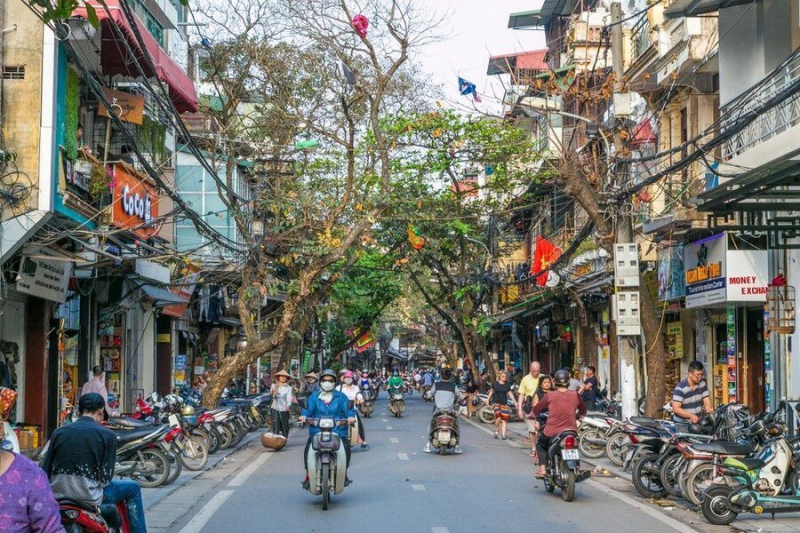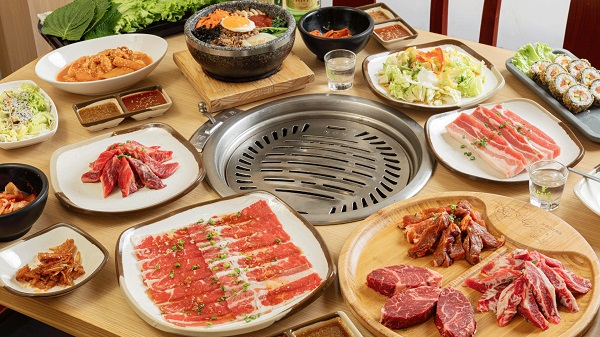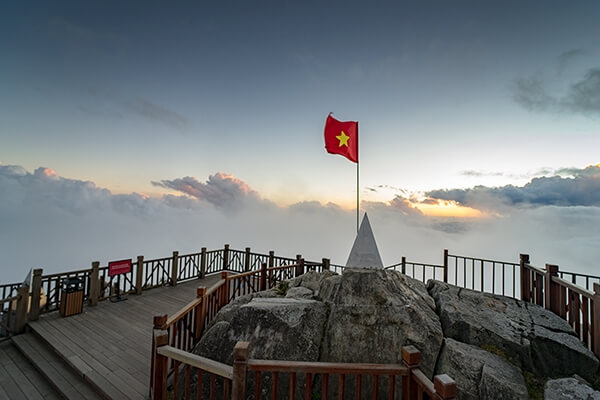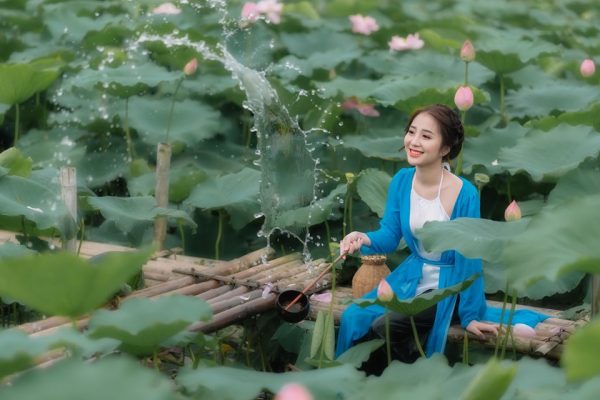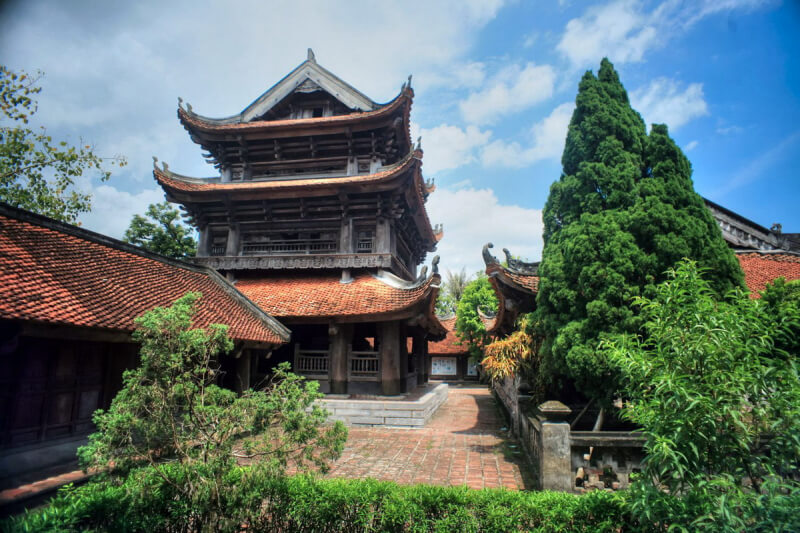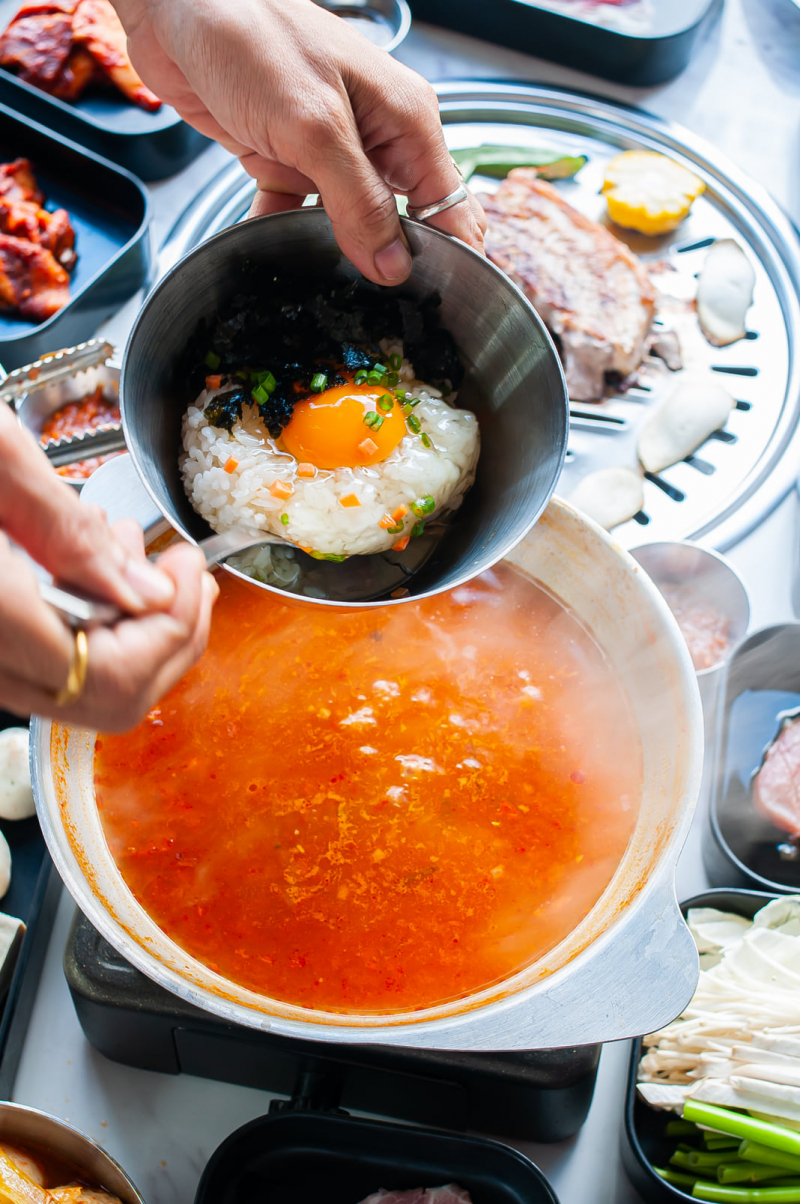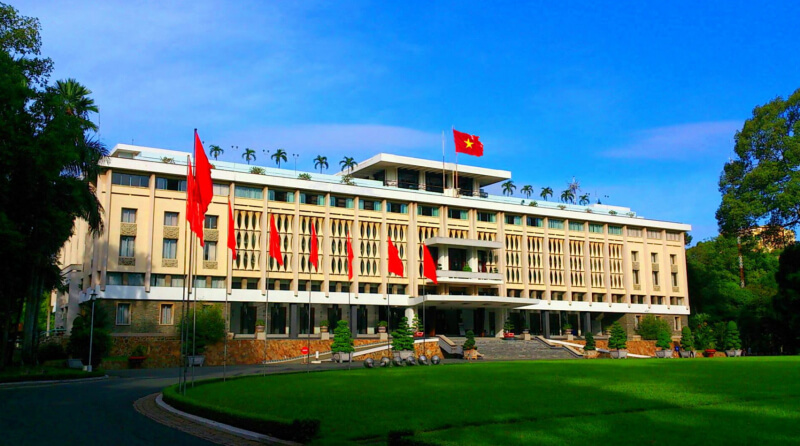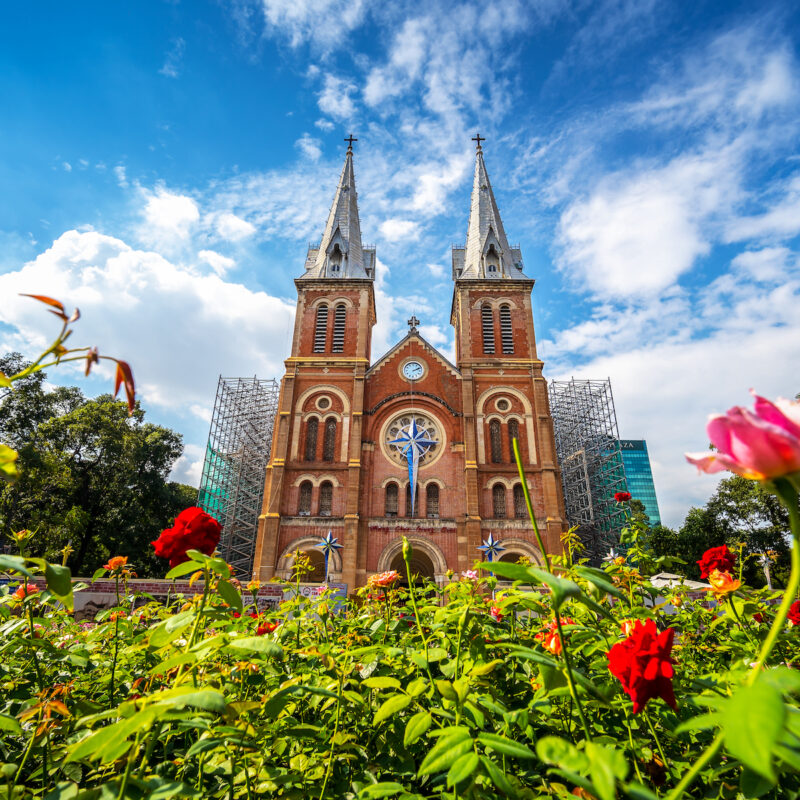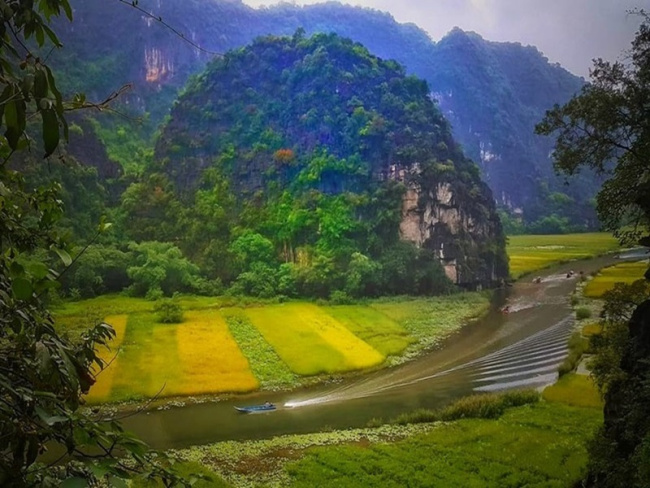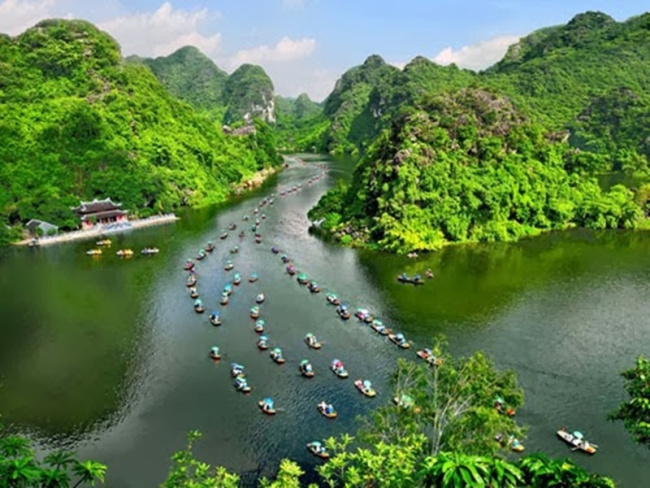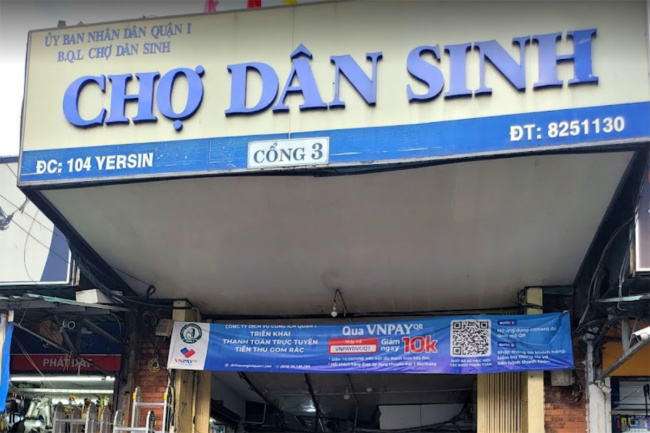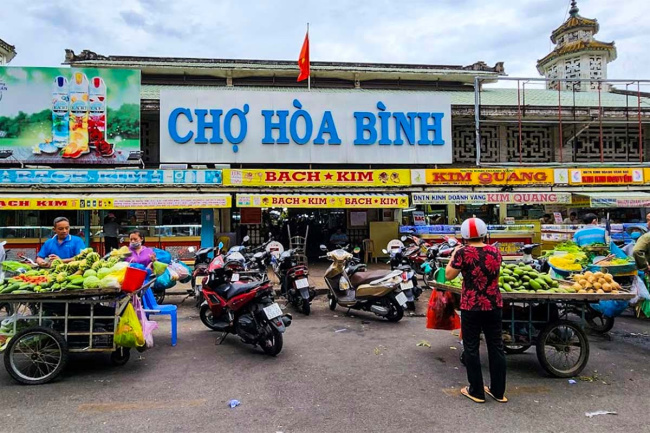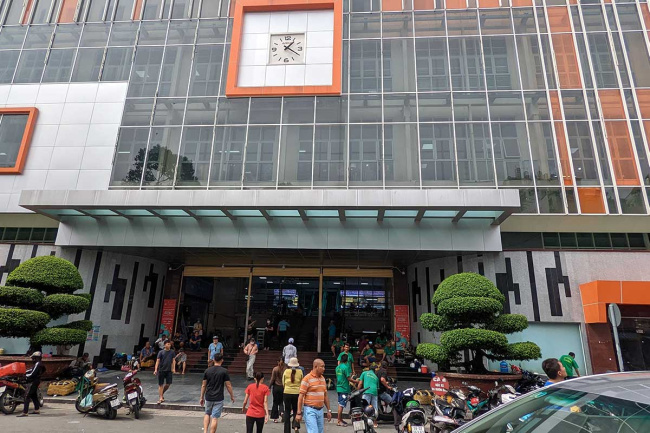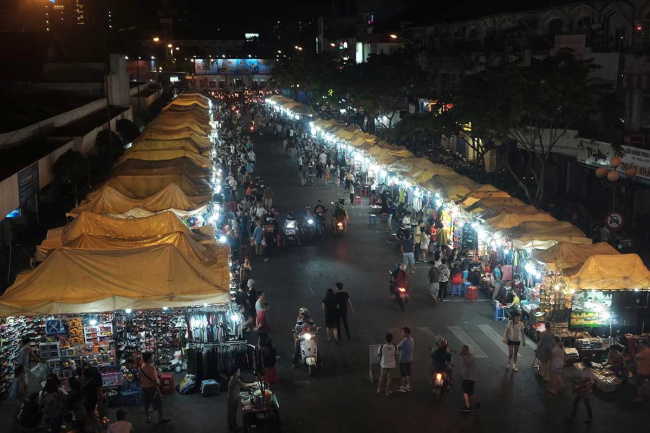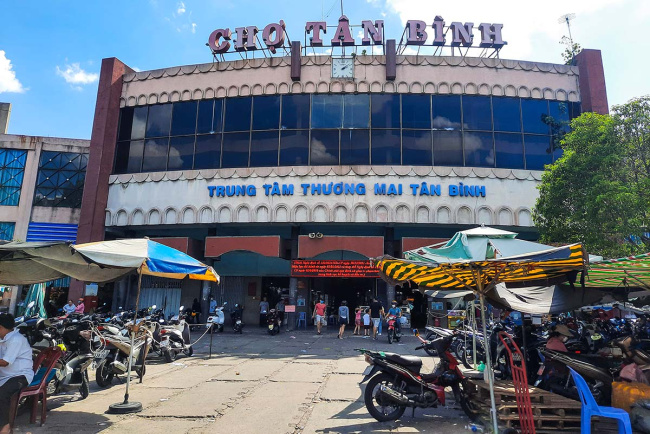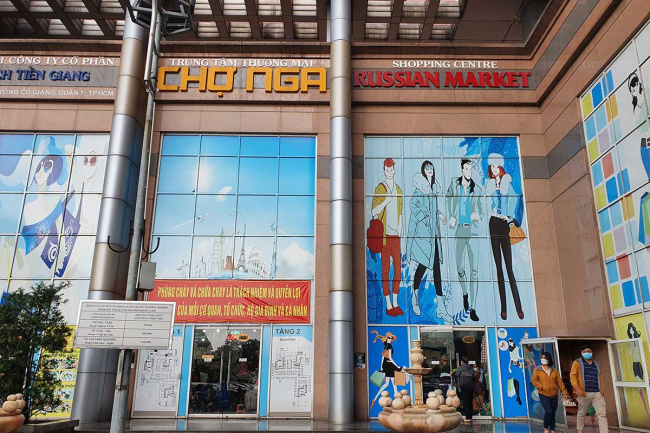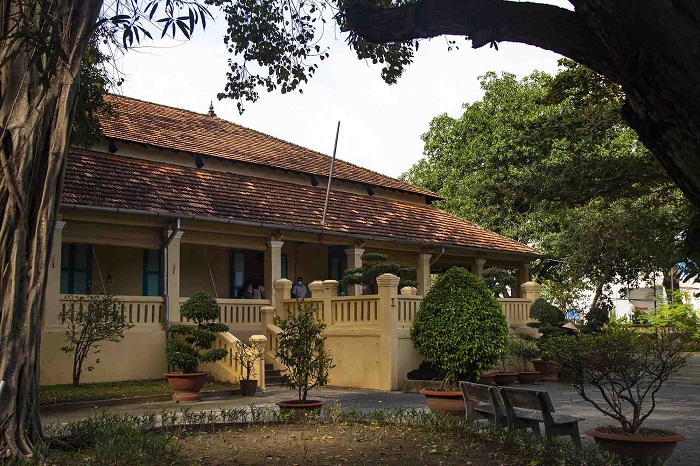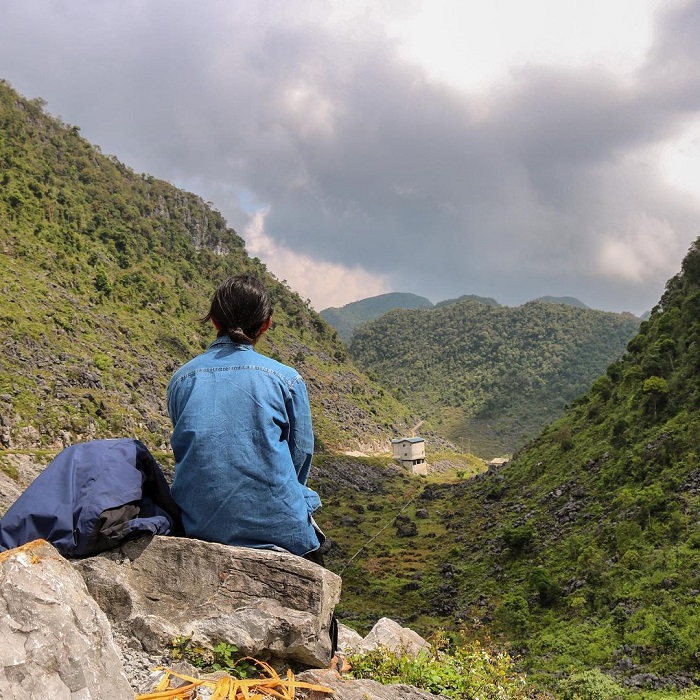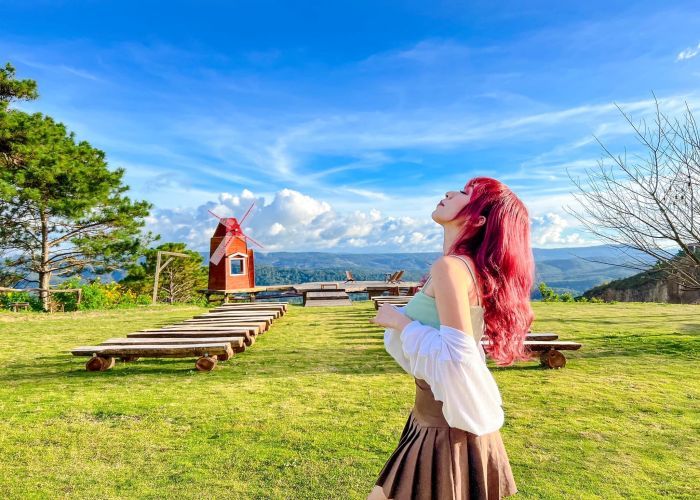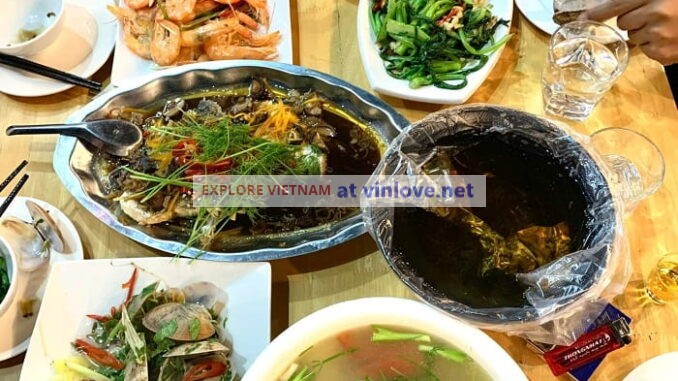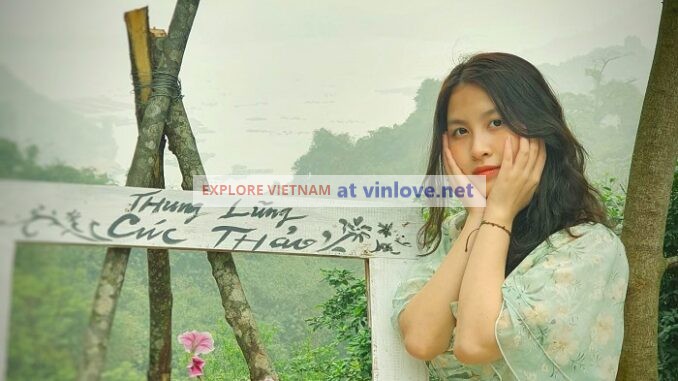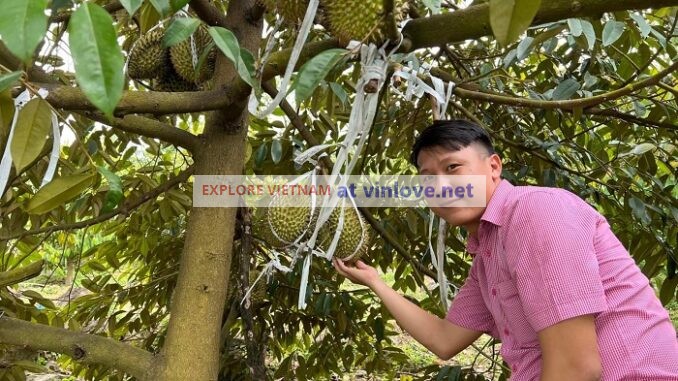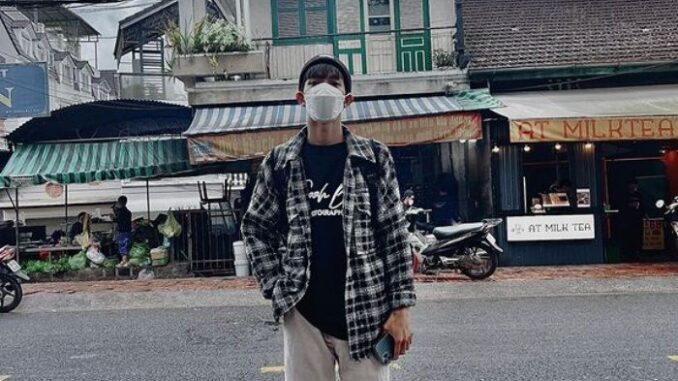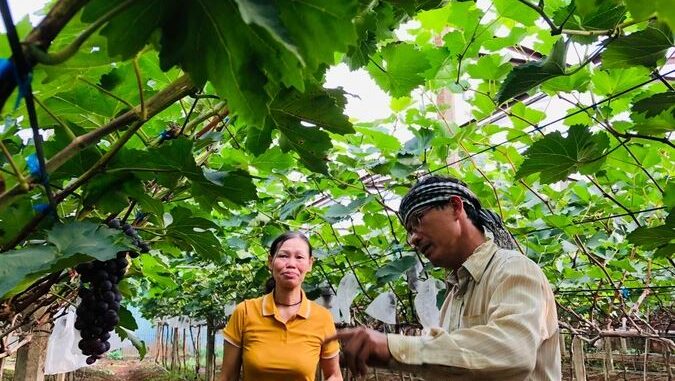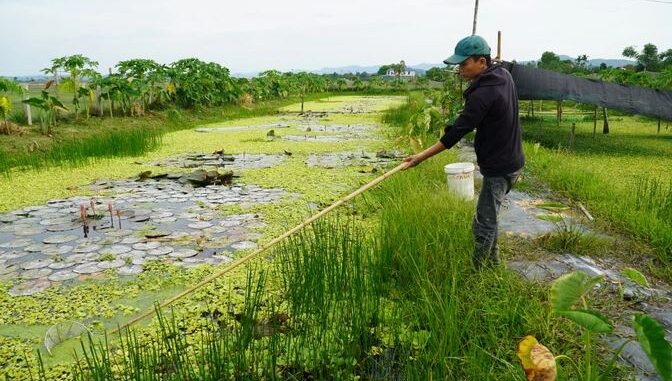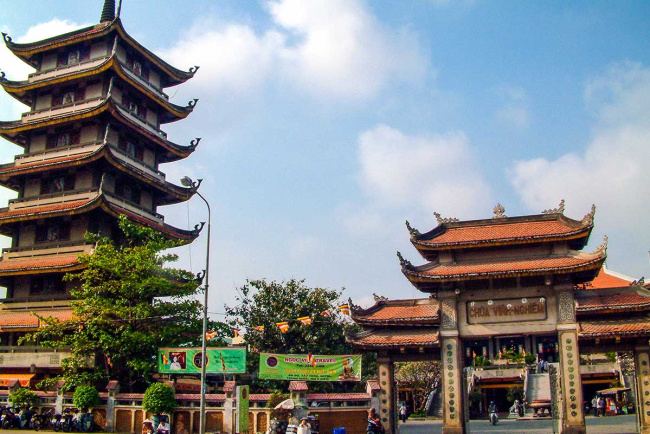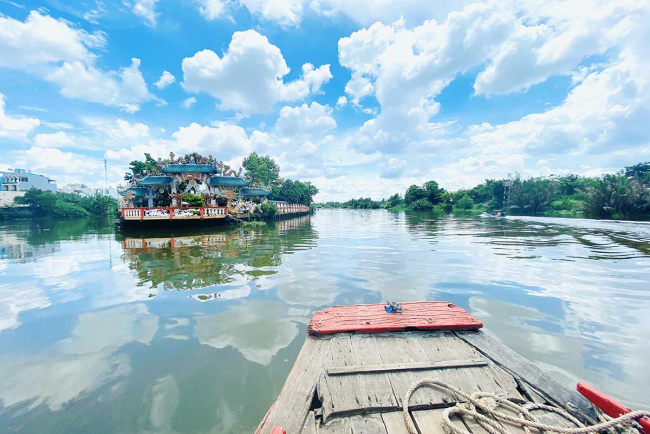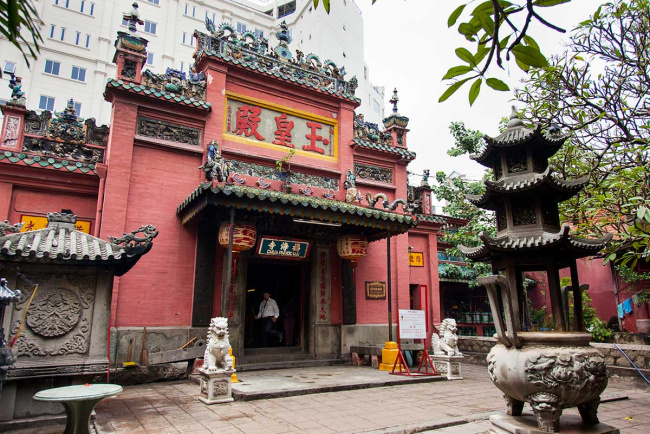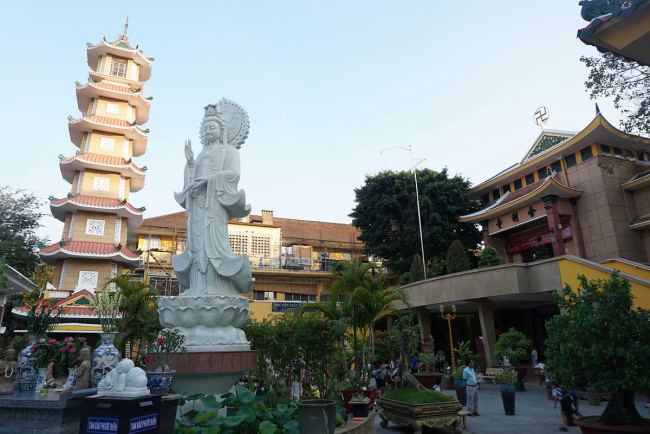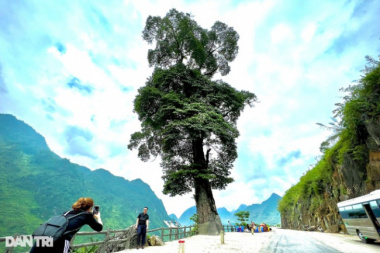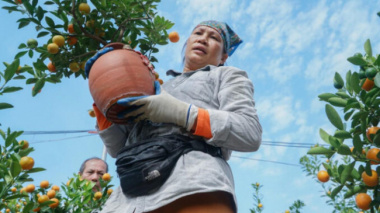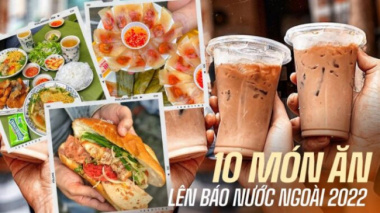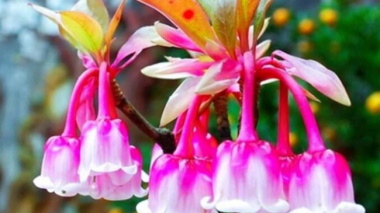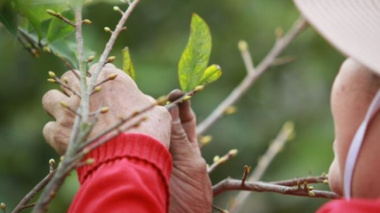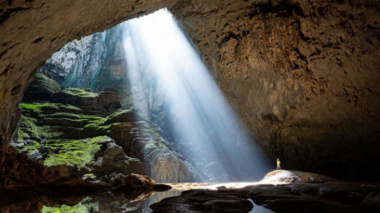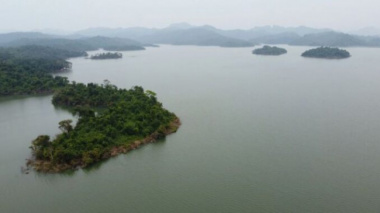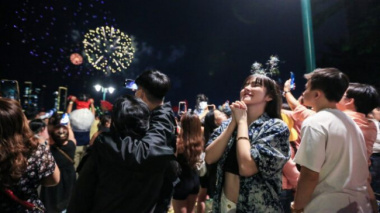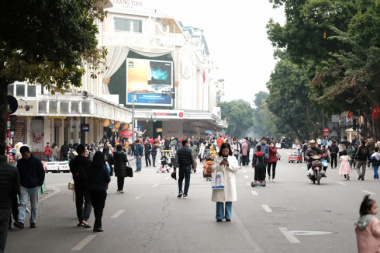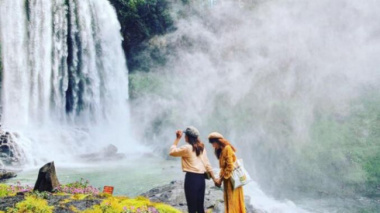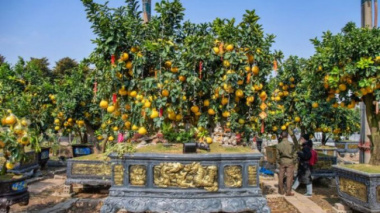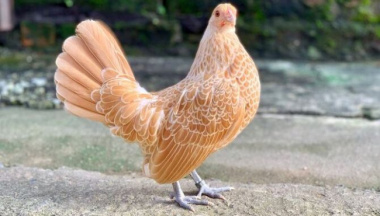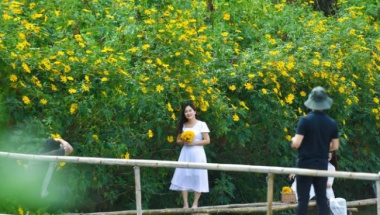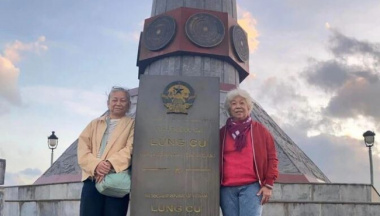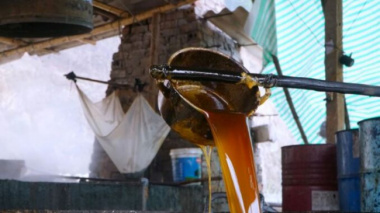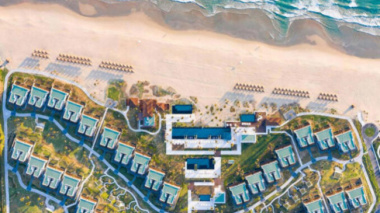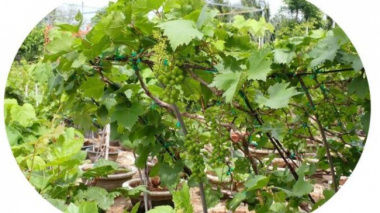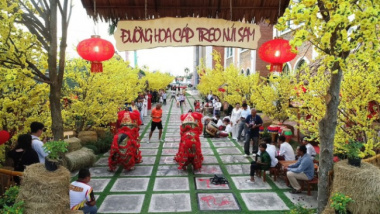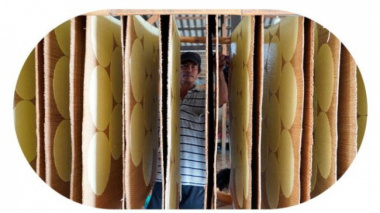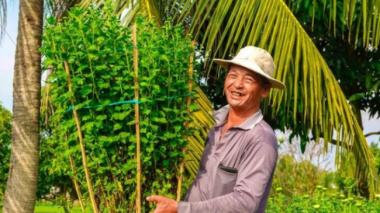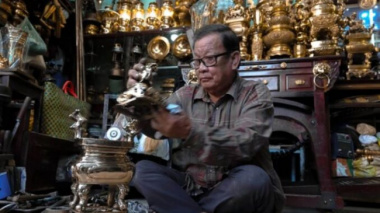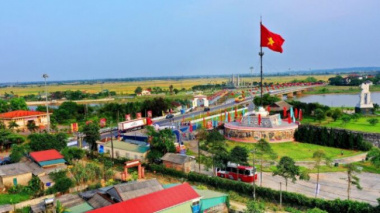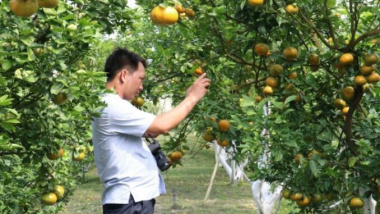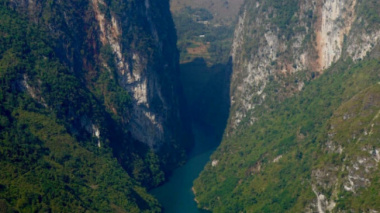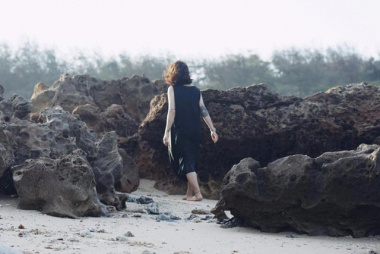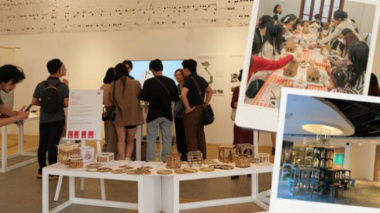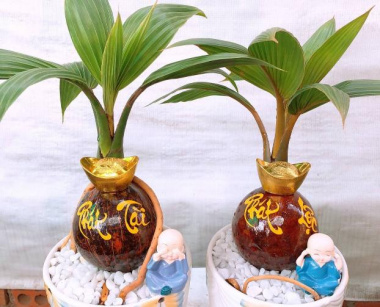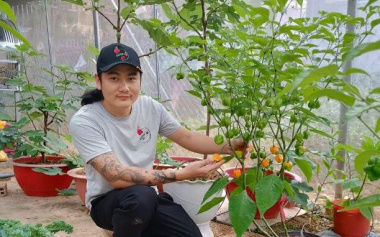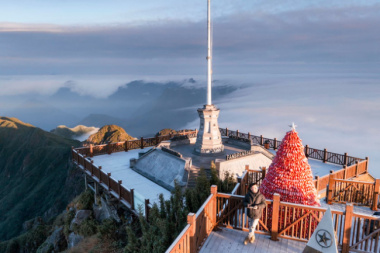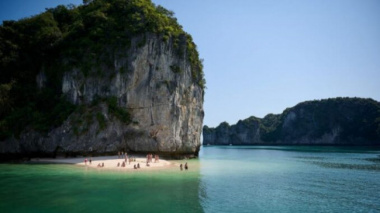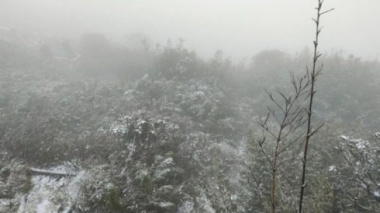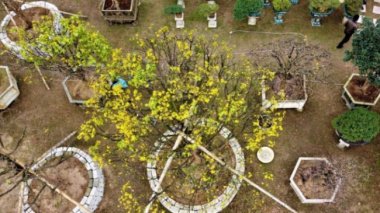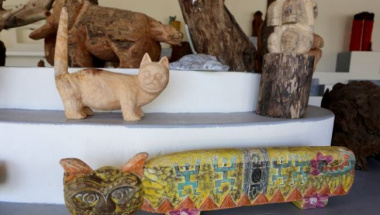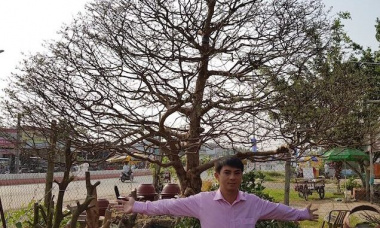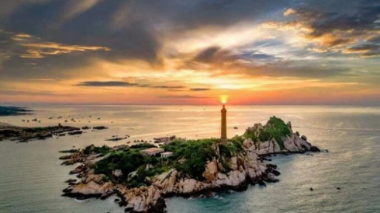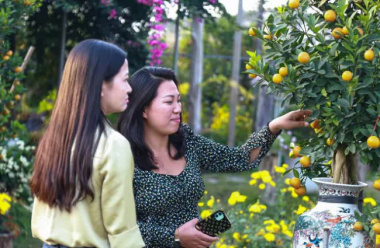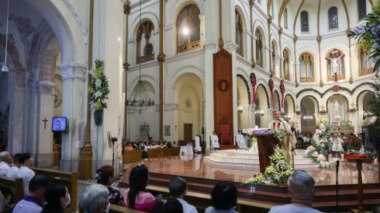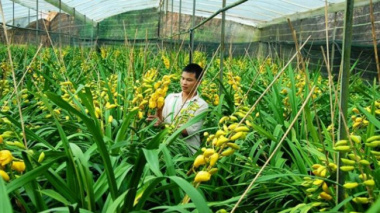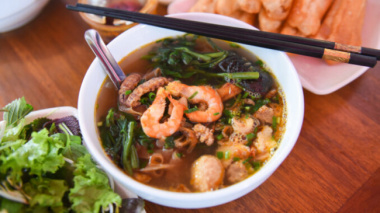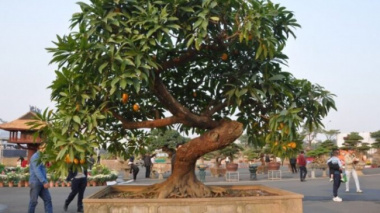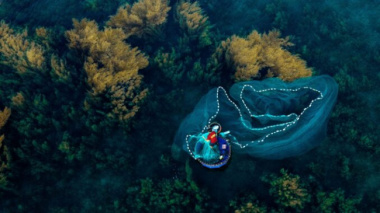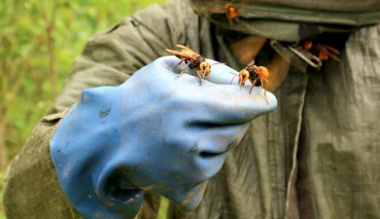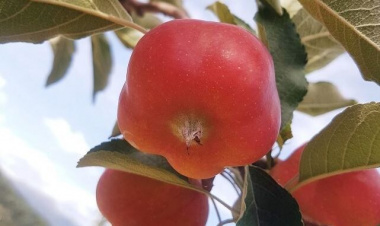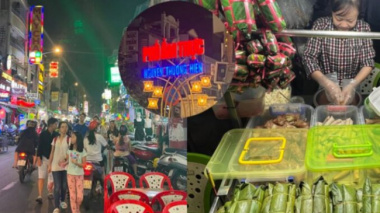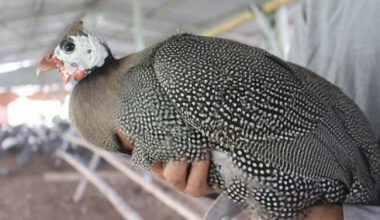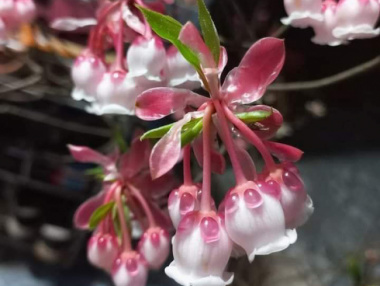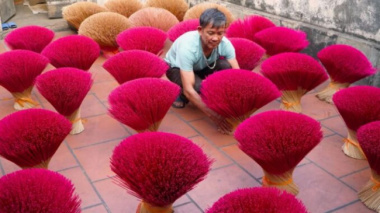Mu Cang Chai District, Yen Bai, Vietnam
- Remote District in Northwest Vietnam
- History of Mu Cang Chai
- Main Attractions
- Rung Truc Mu Bamboo Forest
- Rice Terraces
- Kim Noi Village
- Khau Pha Pass
- Mo Waterfall
Hidden at the base of the Hoang Lien Son Mountain Range is a remote district called Mu Cang Chai (Mù Cang Chải). Part of Vietnam’s Yen Bai (Yên Bái) Province, the district is situated in the country’s Northwest Region. Unknown to most travelers, Mu Cang Chai is emerging from the shadows to become a tourist destination because of its magnificent scenery.
Renowned for its verdant rice terraces, harvests, and festivals, more people are visiting this remote community every year.
Remote District in Northwest Vietnam
The Mu Cang Chai District is one of seven districts in Yen Bai Province. Covering an area of 1,199 sq km (463 sq mi), the largest urban area in the district is the main town, also called Mu Cang Chai. In addition to Mu Cang Chai Town, there are 13 rural communes in the district.
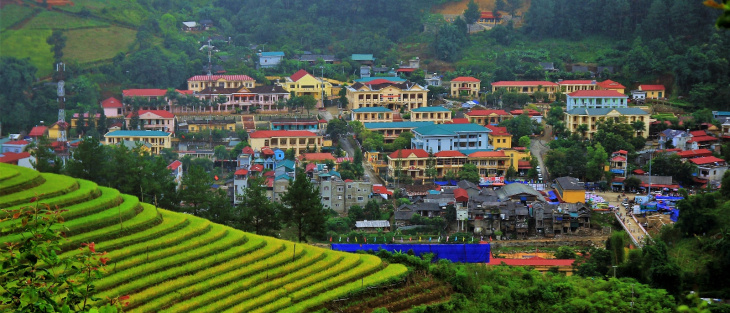
Colorful buildings in Mu Cang Chai Town. Photo by: .
The provincial capital city, Yen Bai, is about 161 km (100 mi) to the east of Mu Cang Chai. Even further away is Hanoi, Vietnam’s capital city, which is around 305 km (189 mi) to the southeast. Being such a remote district, travelers will have to make the journey to Mu Cang Chai by road. Private and public transportation is available from both Yen Bai City and Hanoi.
Travelers from Yen Bai City should be able to make the journey to Mu Cang Chai in about 2 hours. For those that are coming from Hanoi, the journey will take about 6.5 hours. Overnight buses from Hanoi are a common method of transportation because they are convenient and affordable.
History of Mu Cang Chai
With mountainous landscapes fueled by streams and waterfalls, humans have inhabited the area around the Mu Cang Chai for thousands of years. Aside from agriculture, the Hong and Chay Rivers have been used by ancient communities for trading and communication. Evidence of these ancient inhabitants has been found in the form of temples, stone tools, and other important artifacts.
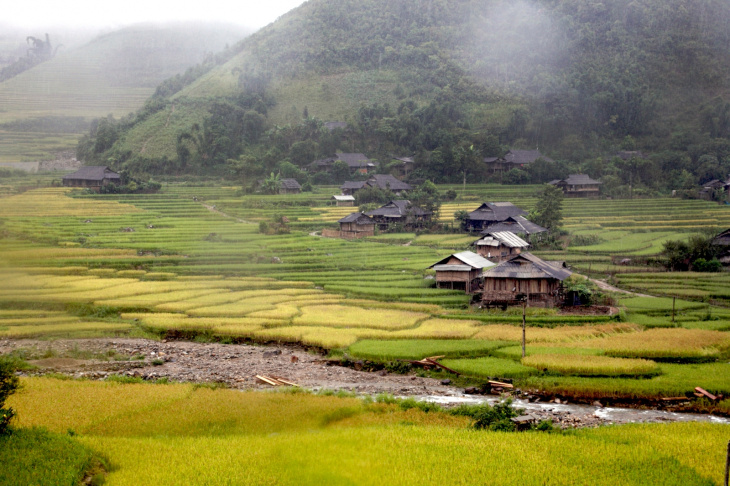
Traditional stilt homes in Mu Cang Chai. Photo: Biggs
Sharing different feelings towards the French than the province, locals in Mu Cang Chai were mainly neutral or supportive of the foreign occupation. The Yen Bai Uprising of 1930 was a major clash between local and foreign forces with many dying on both sides. However, the conflict seemed to remain mostly outside the area due to the local Hmong people having a friendly reputation amongst the French.
For thousands of years, the Hmong people have lived in the area around Mu Cang Chai District. In fact, it was the Hmong people who developed agriculture in the district by using the landscape to transport water to the terraces. Using bamboo and taking water from the mountain slopes, the cultivation of rice has become an important part of the district’s history and identity.
Main Attractions
A dominating feature within Mu Cang Chau’s landscape, the terraced rice fields are the districts’ top attraction. Other features in the district include the Rung Truc Mu (Rừng Trúc Mù) Bamboo Forest, Kim Noi Village, Khau Pha (Khau Phạ) Pass, and Mo Waterfall. Travelers in the area can visit these destinations solo or hire a local guide in Mu Cang Chai Town.
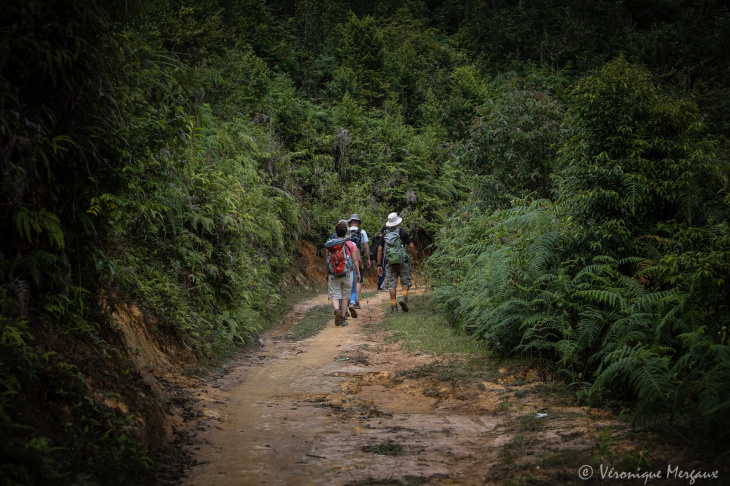
Hiking in Yen Bai’s Mu Cang Chai District. Photo: Véronique Mergaux
Rung Truc Mu Bamboo Forest
In the mountain forests around Mu Cang Chai, one of the most impressive sights is the bamboo at Rung Truc Mu. Filling an entire forest and stretching towards the sky, Rung Truc Mu is a popular hiking and photography spot. Clear-cut paths take visitors safely through the bamboo with many walkways interlinking with each other. Resting points along the way are great for picnics or a quick photoshoot.
Rice Terraces
With mountains in the backdrop and green terraces at the forefront, the rice fields of Mu Cang Chai are famous for their beauty, history, and culture. What most tourists may not know is that there is more than one field and one main area of fields. Rather, tourists can book a full-day tour of the rice terraces at Mu Cang Chai.
The highest terraced hill is called Che Cu Nha and it is about 35 km (22 mi) outside of Mu Cang Chai Town. Travelers who want the best viewpoint of Che Cu Nha can take a hike up a short, but steep hill to reach a panoramic overlook of the terraces.

Terraced landscapes in Mu Cang Chai District Photo: Nuno Luciano
About 30 km (18 mi) outside of the town, the most famous terraces are known as Ta Pan Tan. Ranked as the most beautiful, Ta Pan Tan has been recognized as a national heritage site. In Ta Pan Tan, tourists won’t want to miss seeing Mam Xoi Hill, where sticky rice is grown. Finally, Mong Ngua is a horseshoe-shaped terrace that is only 2 km (1.25 mi) outside of Mu Cang Chai Town.
Kim Noi Village
Home to the Thai ethnic people, Kim Noi Village is a quiet destination that rests at the end of Mu Cang Chai’s famous rice fields. As a small community, there isn’t much to see in the village, but the local markets and traditional stilt houses seem to attract a few visitors each year.
Tourists can also partake in homestays to learn more about the village’s culture and traditions. Popular homestay activities include Thai dancing and late-night bonfires.
Khau Pha Pass
Translated as “the Sky’s Horn”, travelers will have to conquer Khau Pha Pass if they want to visit Mu Cang Chai. A stunning mountain pass, Khau Pha is also full of dangerous curves and steep slopes. While a few tourists may brave the pass on a motorbike, those who aren’t as confident in their driving skills should hire a local to take them to Mu Cang Chai Town.

Khau Pha Pass. Photo:
Along the journey, Khau Pha Pass delights travelers with its epic viewpoints and horn-like summit, which is often shrouded in dense fog. Pullover spots along the pass allow tourists to take pictures along the way.
Mo Waterfall
For hiking enthusiasts, the Mo Waterfall is a challenging trek that ends at the base of a 40 m (131 ft) cascade. The waterfall sits between the Na Hang Cliffs A and B. As the waterfall comes down from the cliffs, there are 4 levels, with the highest providing an excellent view of the water and landscape.
Travelers looking to make the trek to the waterfall will have to start in the Mo De Commune. The rainy season is when the Mo Waterfall is at its fullest with the cascades decreasing in size during the dry season.
Accommodations
Mu Cang Chai District is mostly rural, with only one major town. For tourists looking to stay overnight, accommodations mostly consist of homestays and guesthouses. Lacking major resorts, the largest hotel in the area is the Mu Cang Chai Ecolodge. With friendly locals and affordable prices, homestays in Mu Cang Chai are a pleasant experience.
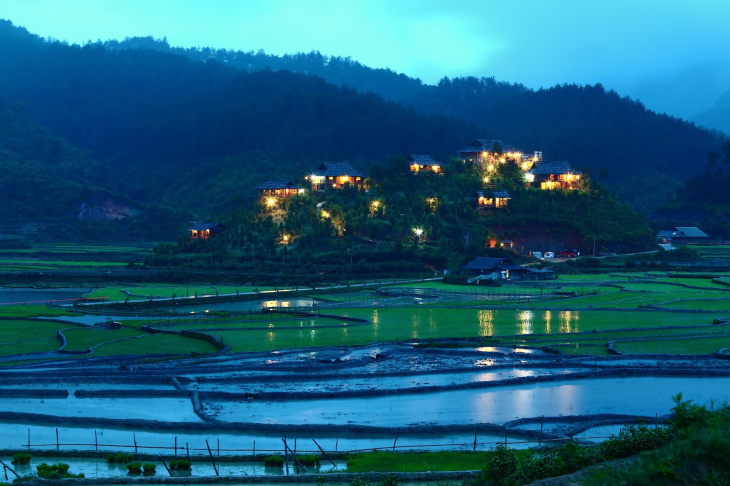
Mu Cang Chai Ecolodge. Photo: Ecolodge Mucangchai
Mu Cang Chai Ecolodge – Outside of the main town, one of the highest-rated places to stay in the district is the Mu Cang Chai Ecolodge. Structured like a traditional hotel, the ecolodge has a large property that features a restaurant, bar, garden, terrace, and 24-hour front desk. Overnight guests are treated to complimentary Wi-Fi and private parking.
Travelers will have a choice of booking a private or shared dormitory. Included with the stay are free toiletries and an a la carte or Asian breakfast.
Indigenous Homestay – A more rustic option, Indigenous Homestay overlooks Mam Xoi Hill. With several rooms, travelers can book shared accommodations or private rooms. Lacking a restaurant, the host family is happy to cook meals, offering vegetarian, vegan, and gluten-free options. After a long day, guests will love relaxing in the garden or socializing in the shared lounge.
Hello Mu Cang Chai Homestay – Nestled amongst terraced fields and overlooking a lake, the Hello Mu Cang Chai Homestay is run by a local family who provides overnight accommodation and meals to travelers for an affordable rate. Rooms at the property include a double, which fits up to four people, meanwhile, large groups of travelers can book the Bungalow.
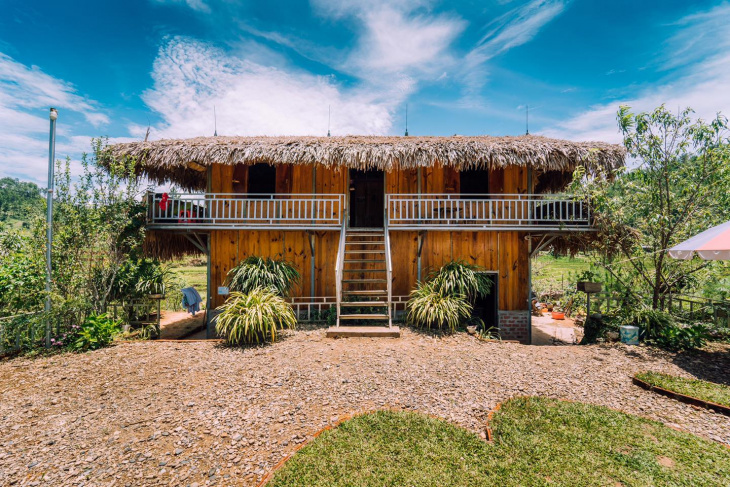
Rustic accommodations at Hello Mu Cang Chai Homestay. Photo: Hello Mu Cang Chai Homestay
A small restaurant on the property provides breakfast, lunch, and dinner. Guests at the homestay will also have access to private bathrooms, free Wi-Fi, and private parking.
Pink Homestay – Travelers looking to stay in Mu Cang Chai Town might want to check out the Pink Homestay. A smaller establishment, guests can stay in private or dorm rooms. The owner is more than happy to assist guests with any service, including booking tours, transportation, and laundry.
Just steps away from the center of town, travelers will be able to explore the local cafes and restaurants with ease.
Dining
Not coming as a surprise, rice is a specialty dish throughout the Mu Cang Chai District. From the sticky Tu Le rice to the green-colored Tu Le Com, travelers will be able to explore the diversity of this versatile grain. Apart from the traditional white and green rice, some flavors that are added to the mix will drastically change the color of the grain.

The summit of a terrace in Mu Cang Chai District. Photo: Tiendp[bliss – studio]
The 5-color sticky rice is a popular dish, which includes orange, yellow, purple, green, and white rice. Additionally, Tao Meo, a type of apple, is a common fruit in Mu Cang Chai that’s harvested in September and October. Most travelers will get to experience Mu Cang Chai’s authentic cuisine thanks to their hosts, as homestays frequently include shared meals.
Accommodations that have a restaurant on-site will also offer these local favorites. In town, tourists will find a plethora of small restaurants like Pho Xa, which serves traditional Vietnamese dishes with locally grown rice. Another restaurant in the area that has become popular is the Khau Pha Restaurant, which has its own salmon farm.
Weather
With so much of Mu Cang Chai’s tourism-dependent on the crops, most travelers will not visit the district out of season. This means that during the rainy months of May, June, July, and August, tourism in this northwestern district is quiet. Instead, the best time to visit Mu Cang Chai is during the harvest months of September and October.
This is when the rice is being cut from the fields and there are many festivals to celebrate the harvests. With less rain and lower temperatures to interfere, September and October are also great times to explore the rest of the district’s attractions too.

Flooded rice terraces in the Mu Cang Chai District, Vietnam. Photo by: Linh Lys.
One of the best-kept secrets of Northern Vietnam, Mu Cang Chai is a district known only to a handful of travelers. Frequently forgotten in favor of more popular destinations like Sapa, this rural district is home to some of the most spectacular landscapes in Northwest Vietnam. A marvelous destination where wild nature and human culture collide, Mu Cang Chai can’t be missed.
Details
Address: Mù Cang Chải District, Yên Bái Province, Vietnam
Season: Year-round | Best during the harvest months
Đăng bởi: Nông Lộc


